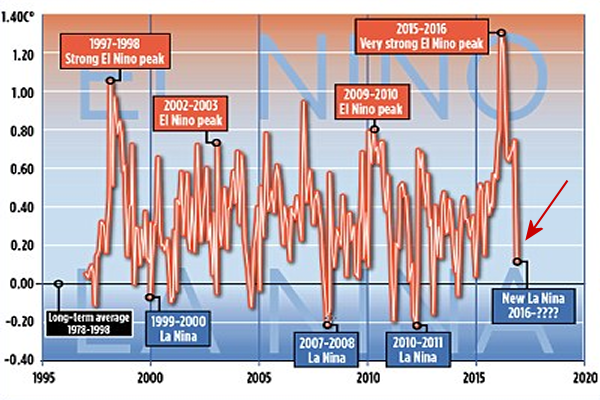
The news comes amid mounting evidence that the recent run of world record high temperatures is about to end. The fall, revealed by NASA satellite measurements of the lower atmosphere, has been caused by the end of El Nino - the warming of surface waters in a vast area of the Pacific west of Central America.
Some scientists, including Dr Gavin Schmidt, head of NASA's climate division, have claimed that the recent highs were mainly the result of long-term global warming.
Others have argued that the records were caused by El Nino, a complex natural phenomenon that takes place every few years, and has nothing to do with greenhouse gas emissions by humans.
The new fall in temperatures suggests they were right.
- Global average temperatures over land have plummeted by more than 1C
- Comes amid mounting evidence run of record temperatures about to end
- The fall, revealed by Nasa satellites, has been caused by the end of El Nino
It has now been replaced by a La Nina event - when the water in the same Pacific region turns colder than normal.
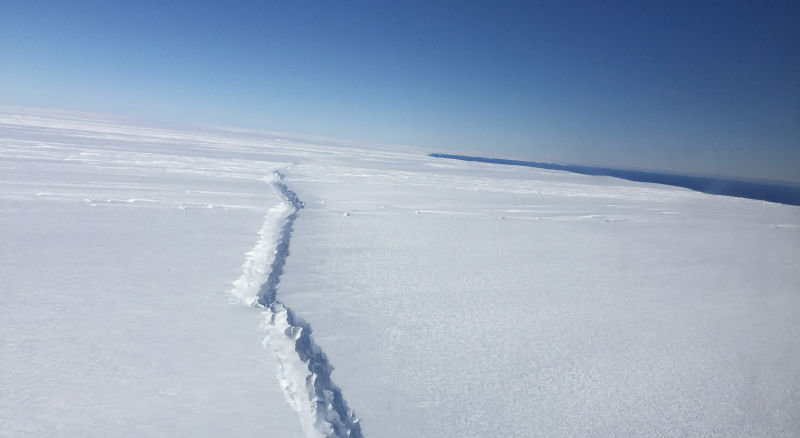
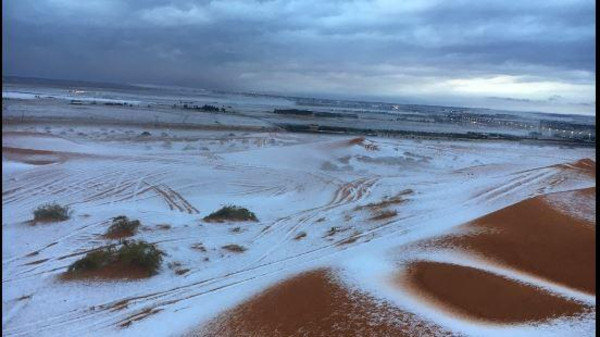
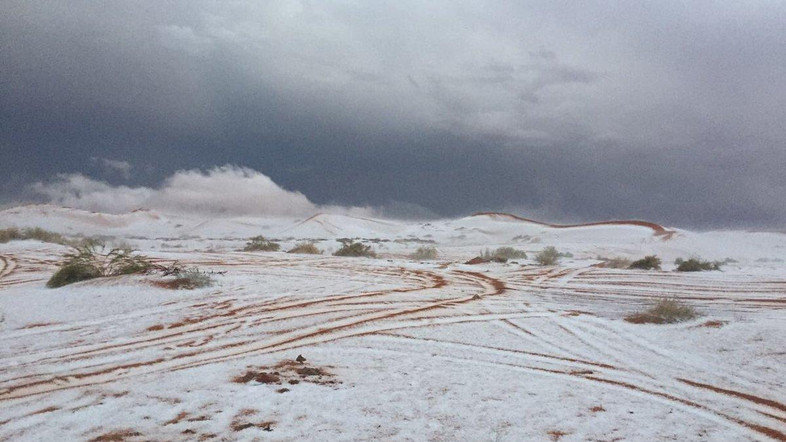
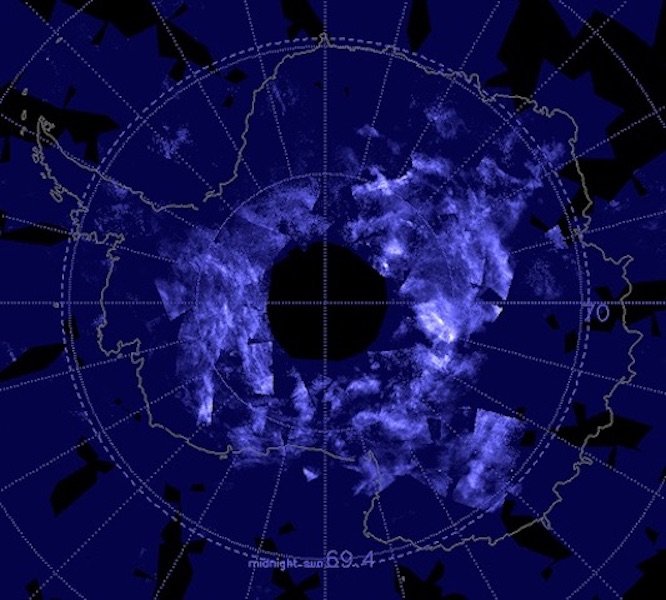


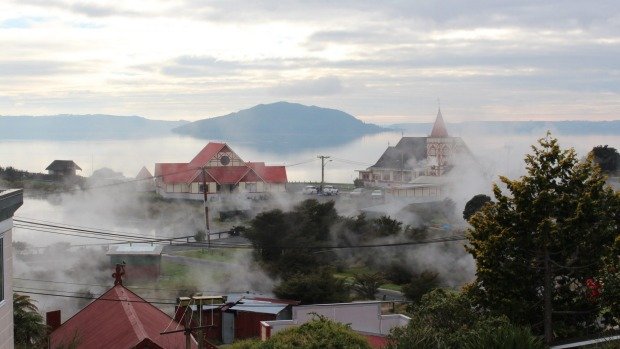
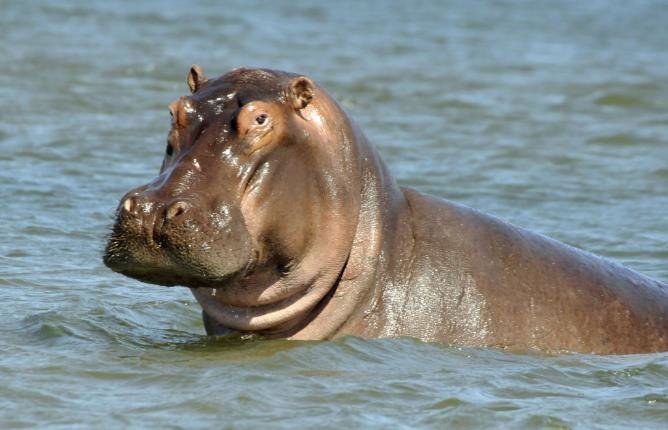





Comment: See also: